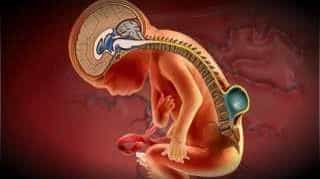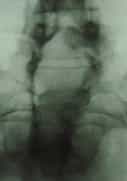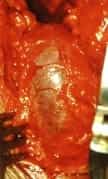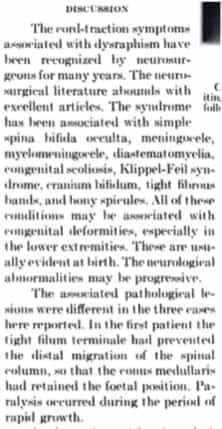
终丝疾病
终丝疾病
最后修改日期:2020年3月2日。罗佑. 萨尔瓦多医生, 医生执照号:10389,神经外科和神经科医生。
什麼是終絲疾病?
终丝疾病含括了:小脑扁桃体下疝第一型、原发性脊髓空洞症、原发性脊柱侧弯、颅底凹陷、颅底扁平、齿状突畸形、脑干扭结症,此外,终丝疾病也可能造成椎间盘膨出、椎间管狭窄、夜尿症等问题。
终丝疾病所表现的症状主要为神经系统、大脑和脊柱方面的症状,如:头疼、恶心、呕吐、吞咽问题、头晕、记忆力减退、颈部疼痛、背部疼痛、腰部疼痛、感觉异常、感觉障碍、下肢疼痛、下肢无力、平衡问题、失眠、行走问题等。
根据研究所研究结果指出:终丝疾病是整个神经系统受终丝牵扯的结果。
终丝疾病是一个遗传性的疾病,患病率高达百分之二十,也就是说,约每5个人之中就有1人患病且需要进行治疗。
终丝疾病的治疗重点在于消除终丝牵扯病因,在研究所我们对每个病例都会进行严格谨慎的检查和诊断,最后再建议进行微创终丝切断手术,手术除了能够消除病因,也能阻止疾病再继续恶化发展,患者术后效果也都相当杰出,没有后遗症或脑神经相关的并发症。
为了确保疾病诊断的正确性和手术医疗的效果,研究所创立了一套专门的诊治系统:终丝系统®,这套完整的医疗法让我们能够正确诊断终丝疾病并应用微创手术技术为病人治疗。终丝手术治疗让神经系统内可逆的损伤得以康复,此外在某些病例我们也可见到患者有脊髓空洞缩小、小脑扁桃体下疝回升、脊柱侧弯变直和椎间盘膨出缩小的情况。
研究所的终丝系统医疗法现在已经成功应用在幼童、成人和老年人病例,患者术后的康复过程快速且没有太大痛苦。(终丝疾病治疗成果)
巴塞罗那Chiari研究所是从1975年就开始研究终丝疾病,我们是这方面疾病研究的先锋,目前我们也是全世界唯一研究终丝疾病的研究所,除了研究外,我们也身负诊断和治疗终丝相关疾病的重任。
在终丝疾病及神经颅脑脊柱综合征被命名前,我们以往都是以脊髓牵扯综合征(Cord Traction Syndrome)、终丝综合征(Filum Terminale Syndrome)或终丝紧张综合征(Tight Filum Terminale Syndrome)来称呼它们。
终丝疾病也常与两个名称相似的疾病浑淆:脊髓栓系综合征(Tethered Cord Syndrome)及脊髓栓系并隐性脊柱裂(Tethered Cord Syndrome with Spina Bifida Occulta)。
为了帮助大家区分这些疾病,我们将介绍各个疾病的概念和所有与终丝系统®相关的疾病:
1. 脊髓栓系综合征并脊柱裂或无脊柱裂
定义:脊髓栓系综合征主要和神经脊柱发育畸形脊柱裂和脊髓脊膜膨出有关,脊柱裂和脊髓脊膜膨出多发生于在腰部并构成脊髓栓系,外部可见囊性肿物,对神经颅脑脊柱整体系统会造成功能性损伤,此外也会造成小脑扁桃体下疝,脊柱侧弯及脊髓空洞症。

图 1:婴儿脊髓脊膜膨出,图片可见黄色线为脊髓,腰骶部墨绿色囊性肿物为脊髓脊膜膨出,图片可见脊髓明显向大脑牵扯并造成小脑扁桃体下疝。
疾病发现:1940年Lichtenstein B.W.医生首先发现描述该病。(Lichtenstein B.W. (1940) “Spinal dysraphism. Spina Bifida and myelodysplasia.” Arch Neurol Psychiatry 44:792-809)
命名:脊髓栓系综合征的命名及定义是在1996年透过Yamada S.医生的著作又重新被认可。(Shokei Yamada. (1996) “Tethered cord Syndrome”. American Association of Neurological Surgeons Publications Commitee”)

图 2:Yamada S.医生著作第一章节的序,表明了该疾病的病理解释还存在争议。
2. 隐性脊髓栓系并隐性脊柱裂
定义:隐性脊髓栓系主要和神经脊柱发育畸形隐性脊柱裂和脊髓脊膜膨出有关,脊柱裂和脊髓脊膜膨出多发生于在腰部并构成脊髓栓系,外部不可见囊性肿物,对神经和脊柱系统会造成功能性损伤;诊断隐性脊髓栓系需要全面检查及核磁共振或电脑断层扫描CT。此外隐性脊髓栓系也可能造成小脑扁桃体下疝,脊柱侧弯及脊髓空洞症。
疾病发现:1976年美国多伦多神经外科医生Hoffman H.J. 医生首先发现描述该病,Hoffman医生认为隐性脊髓栓系和脊髓栓系综合征拥有相同的病症表现,但是由隐性脊柱裂所造成。
命名:Hoffman医生在1976年发表了对31例隐性脊柱裂幼童进行的研究成果,在消除了脊髓栓系后可见神经病症有所好转。(Hoffman HJ, Hendrick EB, Humphreys RP. (1976) “The Tethered Spinal Cord: its protean manifestations, diagnosis and surgical correction”. Childs Brain. 2(3):145-55.)



图 3:隐性脊髓栓系病例,腰4至骶裂孔骨性脊柱裂。左图到右图:腰骶部X光片、手术例图、手术照片。
3. 脊髓牵扯综合征/终丝综合征/终丝紧张综合征
定义:脊髓牵扯综合征与神经系统变异的病症相关,患者亦可能患有脊柱侧弯及小脑扁桃体下疝,终丝紧张牵扯脊髓所造成,脊髓牵扯综合征无其他神经系统畸形。
疾病发现:1949年美国多伦多神经外科医生McKenzie 医生首先描述该病,他是第一位将截瘫、脊柱侧弯和终丝紧张三者连接在一起的医生。(McKenzie KG, Deward FP (1949) “Scoliosis with paraplegia.” J Bone Joint Surg (Br) 31:162-174)
命名:脊髓牵扯综合征是在1953年第一次由北美骨外科医生Garceau医生所命名,Garceau医生在他的论著将脊髓牵扯综合征与脊髓栓系综合征做出区别。(Garceau GJ (1953); “The filum terminale syndrome. (The cord-traction syndrome)”. J Bone Joint Surg (Am) 35:711-716)

图 4:Garceau医生著作段落。
自1949年脊髓牵扯综合征第一次被McKenzie 医生提出及终丝紧张综合征第一次在1953年被Garceau医生命名后,医学上陆续出版了一些相关的研究文献:
1. Subtle imaging findings in a case of tight filum terminale syndrome. Yeung JT, Lee CM, Fong JC. Hong Kong Med J. 2012 Jun;18(3):258-9.
2. Outcome, reoperation, and complications in 99 consecutive children operated for tight or fatty filum. Ostling LR, Bierbrauer KS, Kuntz C 4th. World Neurosurg. 2012 Jan;77(1):187-91. doi: 10.1016/j.wneu.2011.05.017. Epub 2011 Nov 19.
3. Improved symptoms and lifestyle more than 20 years after untethering surgery for primary tethered cord syndrome. Fukui J, Ohotsuka K, Asagai Y. Neurourol Urodyn. 2011 Sep;30(7):1333-7. PubMed PMID: 21626535.
4. Introductory comment: Childhood tight filum syndrome. Van Calenbergh F. Eur J Paediatr Neurol. 2012 Mar;16(2):101-2. doi: 10.1016/j.ejpn.2011.07.017. Epub 2011 Aug 31.
5. Clinical characteristics and surgical outcome in 25 cases of childhood tight filum syndrome. Cornips EM, Vereijken IM, Beuls EA, Weber JW, Soudant DL, van Rhijn LW, Callewaert PR, Vles JS. Eur J Paediatr Neurol. 2012 Mar;16(2):103-17. doi: 10.1016/j.ejpn.2011.07.002. Epub 2011 Aug 11.
6. [Congenital anomalies in the central nervous system (6) occult spinal dysraphism (other than spinal lipoma): congenital dermal sinus, tight filum terminale, neurenteric cyst, split cord malformation, and caudal regression syndrome]. Shigeta H. No Shinkei Geka. 2011 May;39(5):513-27.
7. Preoperative predictors for improvement after surgical untethering in occult tight filum terminale syndrome. Fabiano AJ, Khan MF, Rozzelle CJ, Li V. Pediatr Neurosurg. 2009;45(4):256-61. doi: 10.1159/000228983. Epub 2009 Jul 17.
8. Association of Chiari malformation type I and tethered cord syndrome: preliminary results of sectioning filum terminale. Milhorat TH, Bolognese PA, Nishikawa M, Francomano CA, McDonnell NB, Roonprapunt C, Kula RW. Surg Neurol. 2009 Jul;72(1):20-35. doi: 10.1016/j.surneu.2009.03.008. Erratum in: Surg Neurol. 2009 Nov;72(5):556.
9. Tight filum terminale syndrome in children: analysis based on positioning of the conus and absence or presence of lumbosacral lipoma. Bao N, Chen ZH, Gu S, Chen QM, Jin HM, Shi CR. Childs Nerv Syst. 2007 Oct;23(10):1129-34. Epub 2007 Jun 6.
10. A novel minimally invasive technique for spinal cord untethering. Tredway TL, Musleh W, Christie SD, Khavkin Y, Fessler RG, Curry DJ. Neurosurgery. 2007 Feb;60(2 Suppl 1):ONS70-4; discussion ONS74.
11. Miller-Dieker syndrome associated with tight filum terminale. Chen SJ, Peng SS, Kuo MF, Lee WT, Liang JS. Pediatr Neurol. 2006 Mar;34(3):228-30.
12. Occult tight filum terminale syndrome: results of surgical untethering. Albright AL. Pediatr Neurosurg. 2005 Jan-Feb;41(1):58; author reply 59-60.
13. Occult tight filum terminale syndrome: results of surgical untethering. Wehby MC, O’Hollaren PS, Abtin K, Hume JL, Richards BJ. Pediatr Neurosurg. 2004 Mar-Apr;40(2):51-7; discussion 58.
14. Management of tight filum terminale. Komagata M, Endo K, Nishiyama M, Ikegami H, Imakiire A. Minim Invasive Neurosurg. 2004 Feb;47(1):49-53.
15. Patients with urinary incontinence often benefit from surgical detethering of tight filum terminale. Selçuki M, Unlü A, Uğur HC, Soygür T, Arikan N, Selçuki D. Childs Nerv Syst. 2000 Mar;16(3):150-4; discussion 155.
16. Management of tight filum terminale syndrome with special emphasis on normal level conus medullaris (NLCM). Selçuki M, Coşkun K. Surg Neurol. 1998 Oct;50(4):318-22; discussion 322.
17. Urodynamic evaluation of tethered cord syndrome including tight filum terminale: prolonged follow-up observation after intraspinal operation. Fukui J, Kakizaki T. Urology. 1980 Nov;16(5):539-52.
18. The so-called tight filum terminale syndrome. UIHLEIN A. Minn Med. 1959 Apr;42(4):394-8.


















